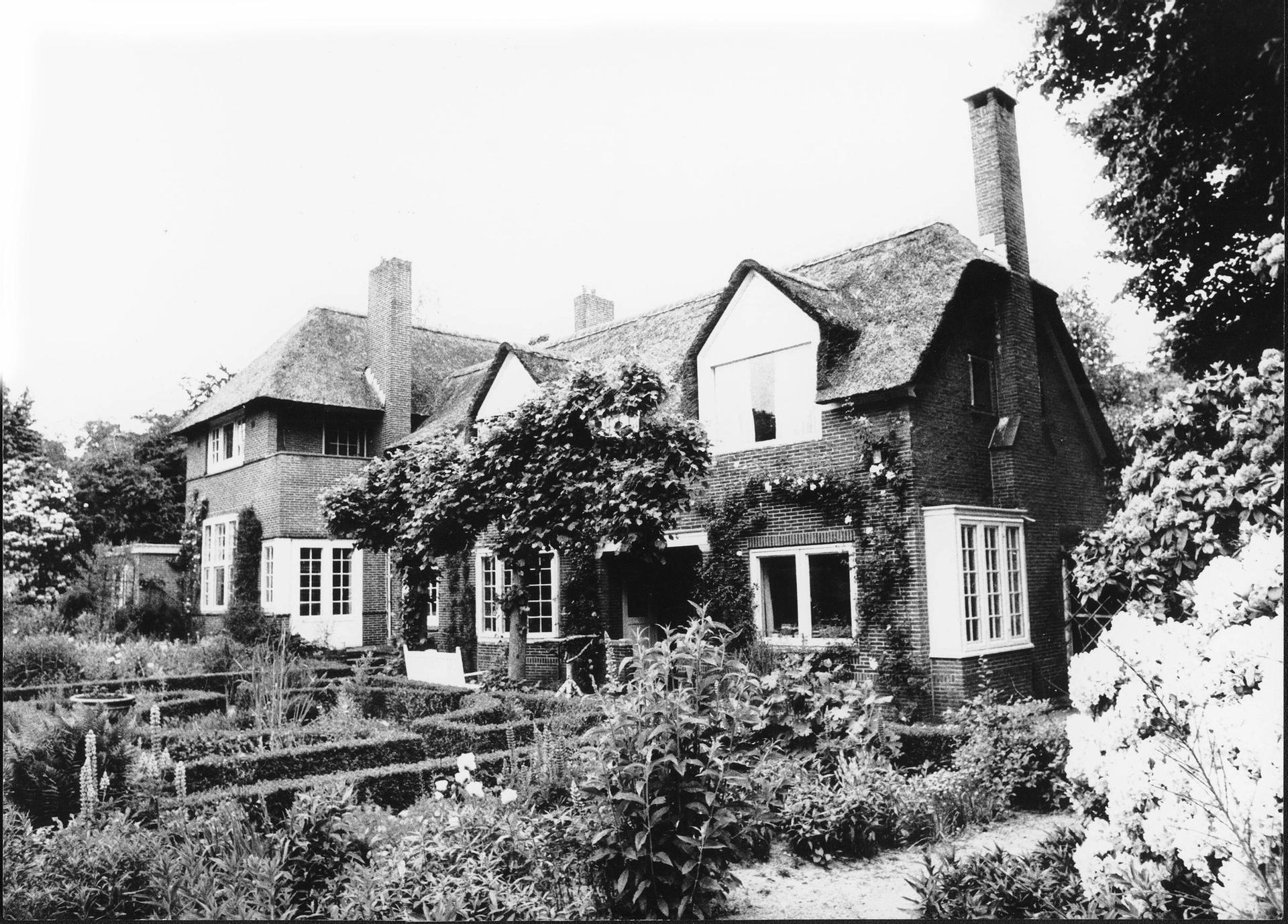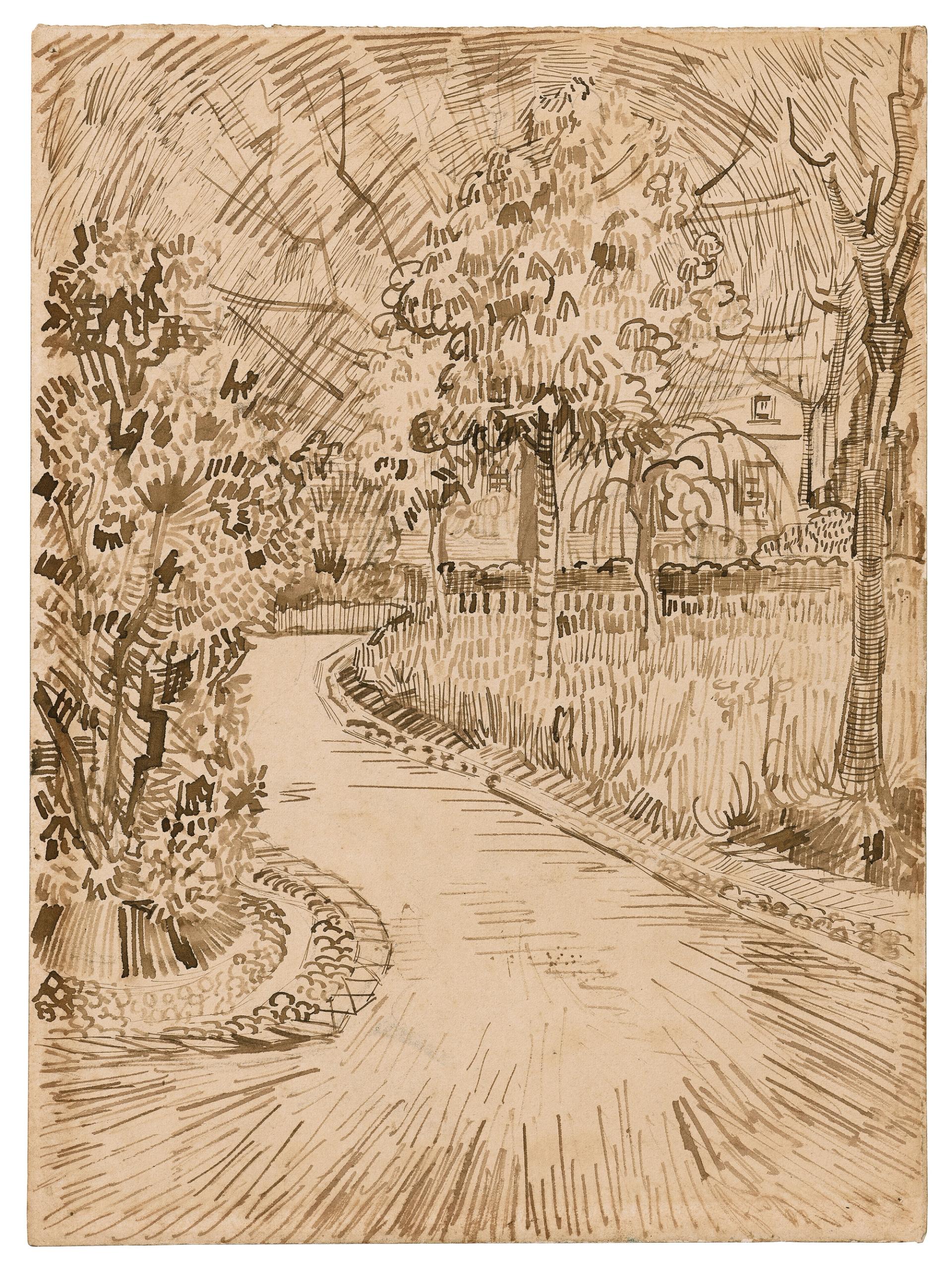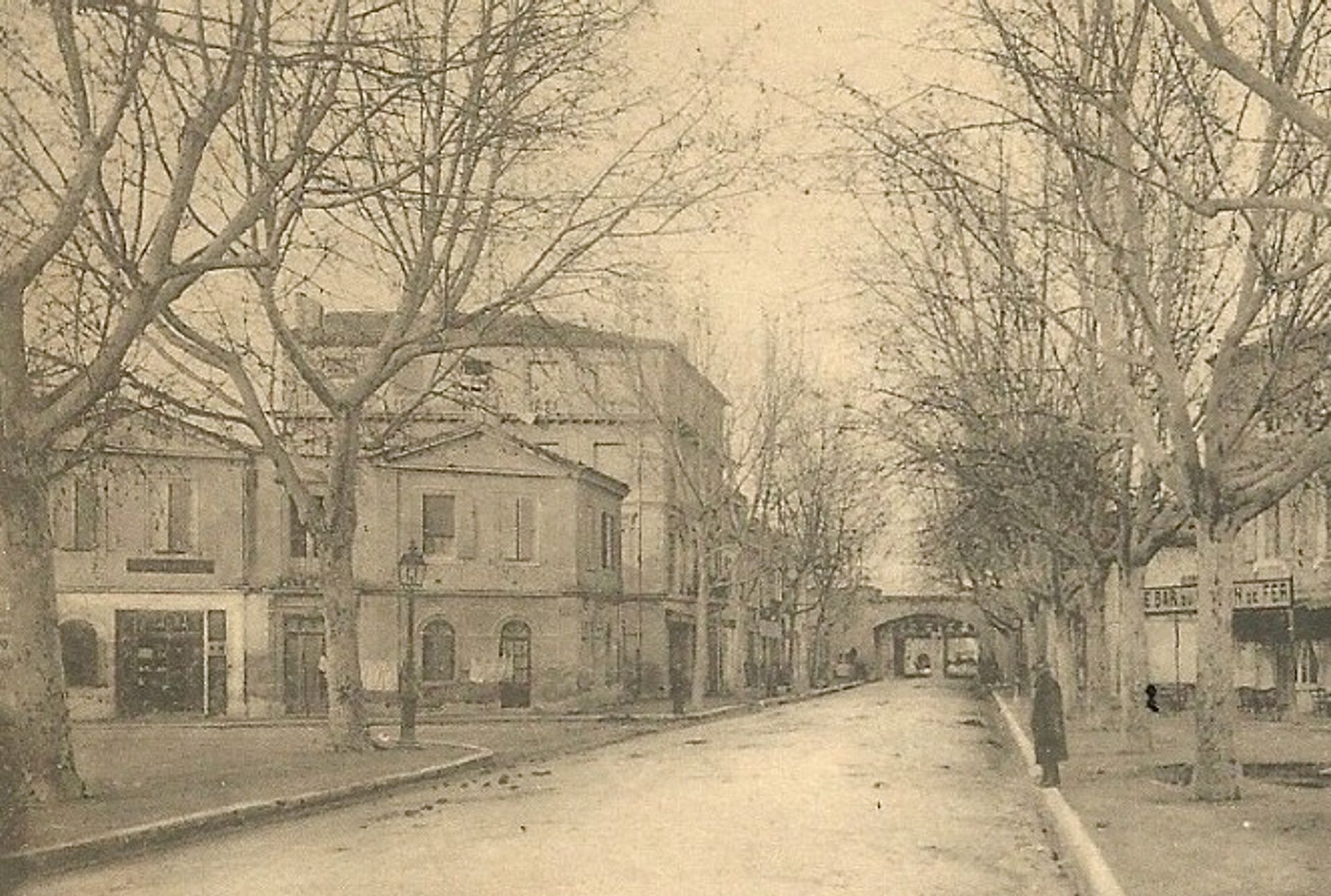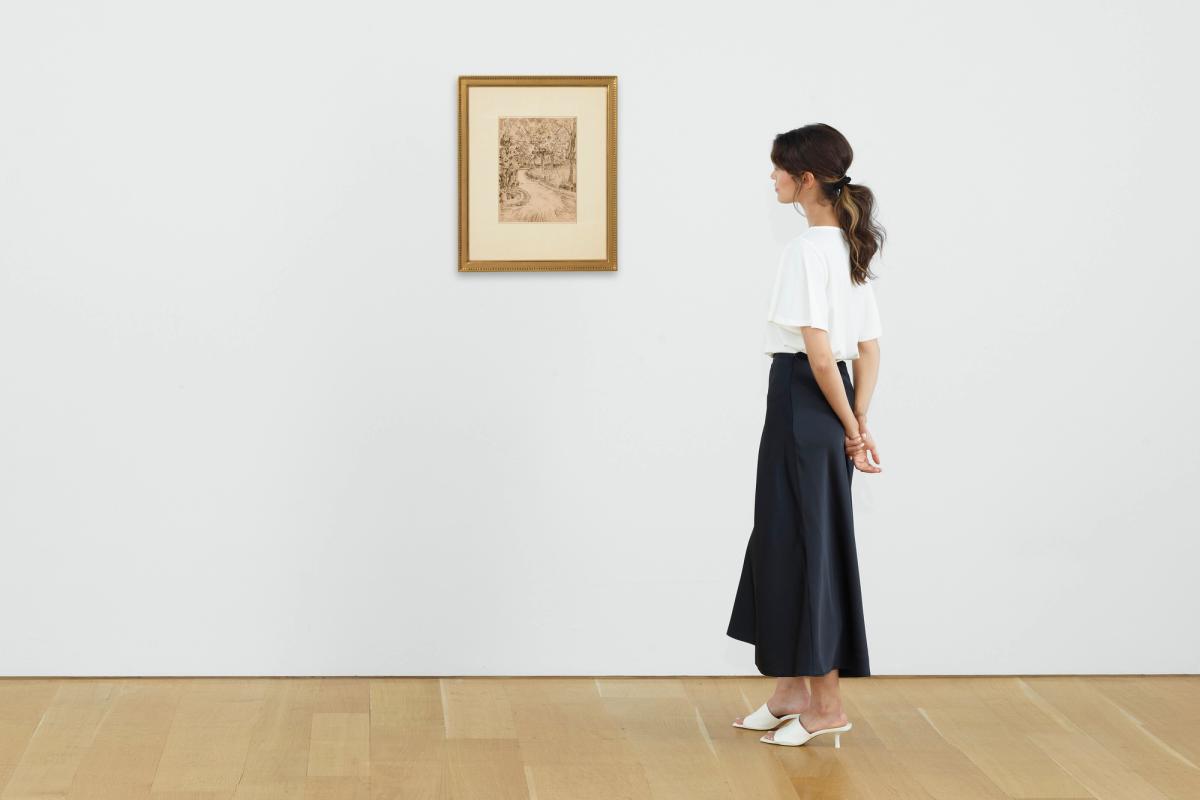An astonishing story lies behind one of Vincent van Gogh’s distinctive reed-pen sketches, which will be auctioned by Christie’s in New York on 9 November. Park at Arles with a Corner of the Yellow House (April 1888) is estimated at $3m-$5m.
The reason why this drawing left the Van Gogh family collection during the Second World War is hardly known, even to specialists. The home of Vincent Willem van Gogh, the nephew of the artist, was at Laren, a small town just east of Amsterdam.
On 30 August 1941 the house was struck by lightning. Vincent Willem and his family were away, but their housekeeper and maid remained there. The roof caught fire and it spread to the top floor, threatening their entire home.

Vincent Willem van Gogh’s family home, named ’t Lanthuys, in Laren (mid-20th century) Credit: Van Gogh Museum, Amsterdam (Vincent van Gogh Foundation) Photograph reproduced in Hans Luijten, Jo van Gogh-Bonger: The Woman Who Made Vincent Famous (Bloomsbury, November 2022)
Vincent Willem owned many hundreds of Van Gogh paintings and drawings, which he had inherited from his father Theo, the brother of Vincent. Although the finest works had been sent for safekeeping in a wartime bunker in the sand dunes of the North Sea coast, he hung some of the lesser pictures in his Laren home.
Fortunately neighbours spotted that the house had been struck, and they rushed to help. The fire was quickly extinguished.
Vincent Willem was extremely grateful to his neighbours and gave Egbert Jan and Louise Francisca Kuipers a drawing: Park at Arles with a Corner of the Yellow House. In 2000 their descendants sold it to a New York dealer and it was then bought by Paul Allen, the co-founder of Microsoft.

Van Gogh’s Parc à Arles avec un coin de la Maison Jaune (Park at Arles with a Corner of the Yellow House) (April 1888) Credit: Christie’s
Park at Arles with a Corner of the Yellow House was drawn with a reed pen, which gives a distinctive quality to many of Van Gogh’s Arles drawings. He would cut the reeds from the beds of nearby canals.
The sketch depicts the public garden in Place Lamartine, which was overlooked by the Yellow House, Van Gogh’s home. A few months later he would share it for two months with his artist friend Paul Gauguin.
In the drawing, the eye is led along the curved path towards two windows which can just be made out on the right side. Although the topography is not entirely clear, the larger window seems to be in a bedroom on the upper floor of the Yellow House and the smaller one, higher up, on a larger building slightly further away in Avenue Montmajour.

Postcard of Place Lamartine and Avenue Montmajour, showing the Yellow House (the small building behind the lamppost) (around 1905)
Van Gogh took out the lease for the Yellow House on 1 May 1888 and the drawing was probably done at the very end of April, when he was considering moving from his hotel to somewhere more spacious and private. So as he drew the verdant scene, he must have been dreaming about his new life in a home of his own. Vincent posted the sketch to his brother Theo on 1 May, the day that he announced the move.
The drawing is being sold as part of the massive Allen sale at Christie’s, which is expected to fetch over $1bn. It also includes an important Van Gogh landscape of spring blossoms. Orchard with Cypresses (April 1888) is likely to achieve over $100m, which would make it the most expensive Van Gogh ever sold at auction.
Other Van Gogh news:
• A Van Gogh letter is coming up for auction, estimated at €100,000-€120,000. Written on 20 January 1890 from the asylum near Saint-Rémy-de-Provence, it is addressed to his friends Joseph and Marie Ginoux, former neighbours in Arles. Most of the letter is philosophising about illnesses, his own and that of Marie. Surprisingly, Vincent argues that his troubles had a positive outcome: “Illness has done me good – it would be ungrateful not to acknowledge that; it has calmed me.” The letter is to be auctioned by Drouot Estimations in Paris on 10 November.

Van Gogh’s letter to Joseph and Marie Ginoux, 20 January 1890 Credit: Drouot Estimations, Paris




